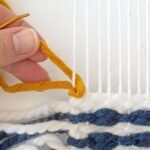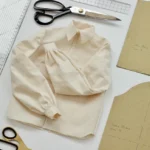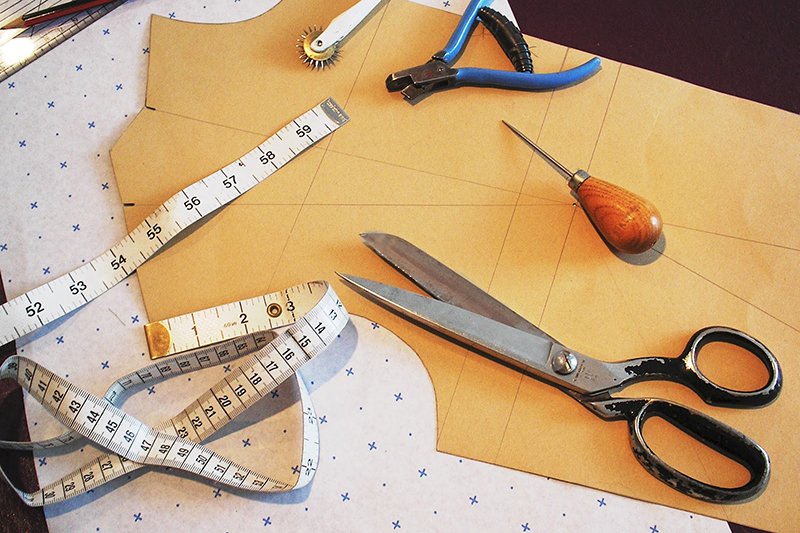Sewing is a rewarding craft, but even experienced sewists can encounter mistakes. Identifying and avoiding common errors will help you achieve better results and enjoy the process more. Here’s a guide to common sewing mistakes and how to avoid them.
1. Using the Wrong Needle
Using the incorrect needle can lead to poor stitching and fabric damage. To avoid this mistake:
- Choose the Right Needle: Match the needle type to your fabric (e.g., ballpoint for knits, universal for woven fabrics).
- Check Needle Size: Use the appropriate needle size for your fabric thickness.
- Replace Regularly: Change your needle every 6-8 hours of sewing to maintain optimal performance.
Using the correct needle ensures smooth stitching and prevents fabric snags.
2. Not Pre-Washing Fabric
Skipping the pre-wash step can lead to shrinkage and color bleeding. To prevent this issue:
- Pre-Wash Fabrics: Wash and dry your fabric before cutting and sewing to avoid future problems.
- Check for Colorfastness: Test for color bleeding by wetting a small fabric swatch.
- Iron Fabric: Iron pre-washed fabric to remove wrinkles before cutting.
Pre-washing fabric helps avoid surprises and ensures a better fit and finish.
3. Incorrect Thread Tension
Improper thread tension can cause stitching issues such as puckering or thread breakage. To manage thread tension:
- Adjust Tension Settings: Follow your sewing machine’s instructions to set the correct tension for your fabric and thread.
- Test on Scrap Fabric: Sew a few stitches on a scrap piece of fabric to test and adjust tension before starting your project.
- Clean the Machine: Regularly clean your sewing machine to prevent tension problems caused by lint buildup.
Correct thread tension helps achieve even and professional-looking stitches.
4. Ignoring Seam Allowances
Failing to account for seam allowances can lead to ill-fitting garments. Avoid this mistake by:
- Following Pattern Instructions: Pay attention to seam allowance measurements specified in your pattern.
- Use a Seam Gauge: Measure and mark seam allowances accurately before cutting and sewing.
- Mark Guidelines: Use tailor’s chalk or fabric markers to indicate seam allowances on your fabric.
Accurate seam allowances ensure proper fit and alignment of your garment pieces.
5. Not Matching Fabric Patterns
Improperly matched fabric patterns can result in misaligned designs. To avoid this error:
- Align Patterns: Ensure patterns or prints align correctly by matching them at seams and edges.
- Cut Carefully: Use pattern pieces to align the fabric properly before cutting.
- Pin and Baste: Use pins or a basting stitch to temporarily hold fabric pieces in place while sewing.
Matching patterns helps create a cohesive and visually appealing design.
6. Sewing Without Proper Lighting
Inadequate lighting can make sewing difficult and lead to mistakes. To improve visibility:
- Use a Bright Light: Ensure your sewing area is well-lit with a bright, focused light source.
- Add a Lighted Sewing Machine: Consider using a sewing machine with built-in lighting.
- Adjust Your Position: Position your fabric and machine to reduce shadows and enhance visibility.
Proper lighting reduces eye strain and helps you see details more clearly.

7. Skipping the Pressing Step
Neglecting to press seams can result in a less polished finish. To achieve crisp results:
- Press as You Sew: Press seams and hems during the sewing process for a professional finish.
- Use the Right Heat Setting: Adjust your iron’s heat setting according to your fabric type.
- Press Seams Open: For a smooth finish, press seams open rather than to one side.
Regular pressing enhances the appearance and accuracy of your sewing projects.
8. Not Following Pattern Instructions
Ignoring or misunderstanding pattern instructions can lead to mistakes in construction. To follow patterns correctly:
- Read Instructions Carefully: Study the entire pattern guide before starting your project.
- Follow Steps Sequentially: Complete each step in the order specified to avoid confusion.
- Ask for Help: If unsure about any step, seek advice from sewing resources or experienced sewists.
Following pattern instructions helps ensure accurate assembly and a well-constructed garment.
Conclusion
Avoiding common sewing mistakes can significantly improve the quality of your projects. By using the correct needle, pre-washing fabric, adjusting thread tension, and paying attention to seam allowances, you can achieve better results. Additionally, matching fabric patterns, using proper lighting, and pressing seams will enhance the overall appearance of your garments. Following these tips will help you create beautiful and professionally finished sewing projects. Happy sewing!










